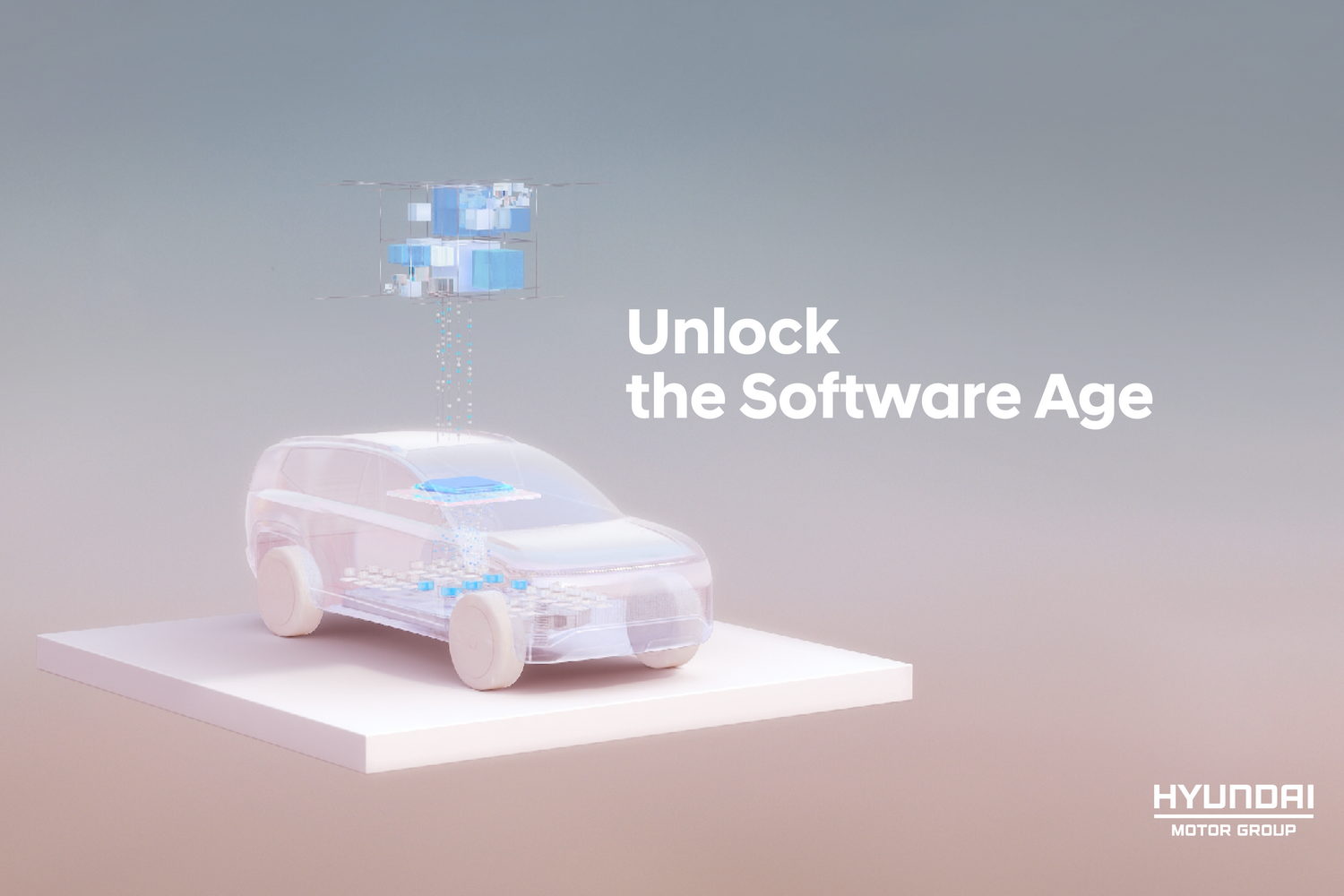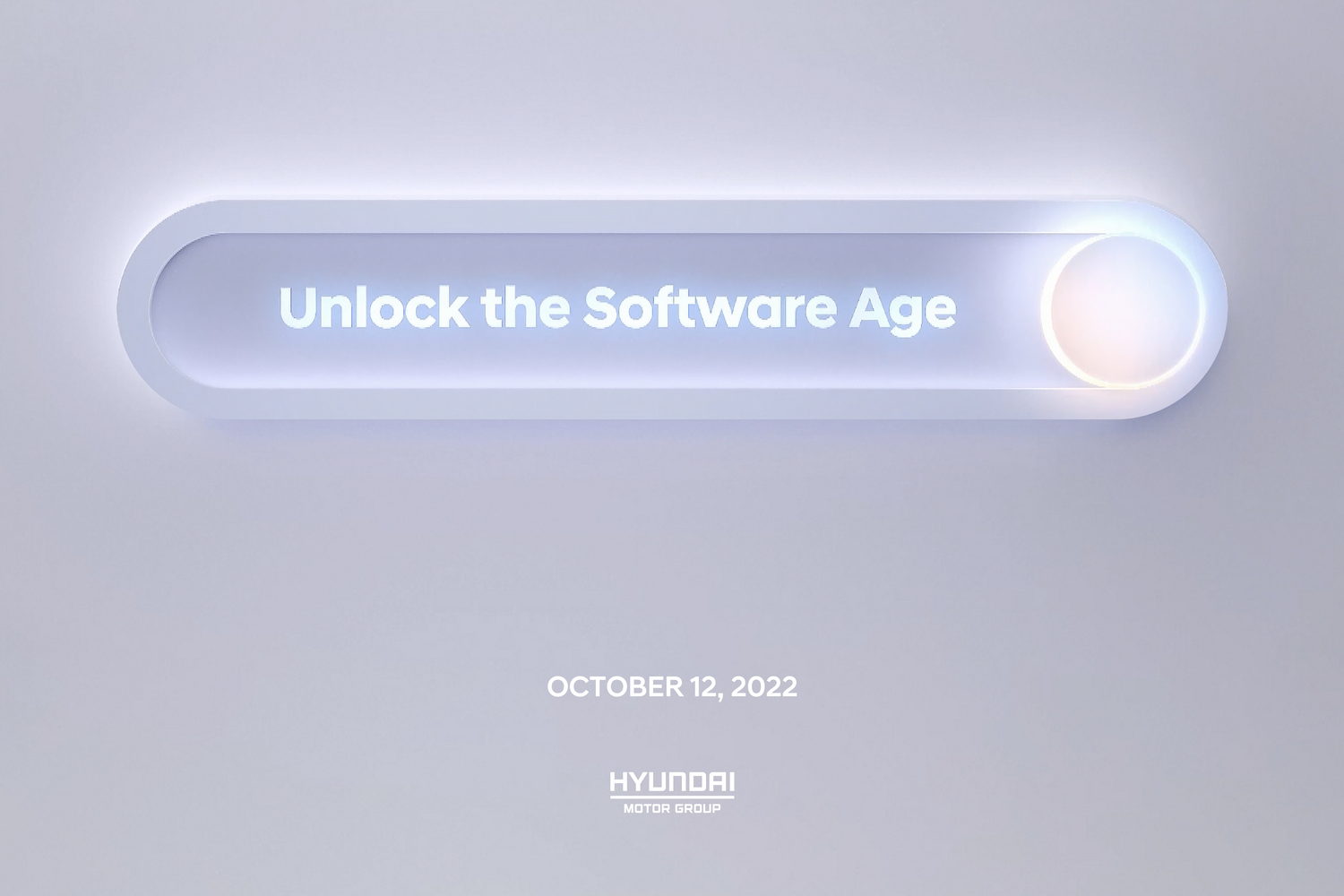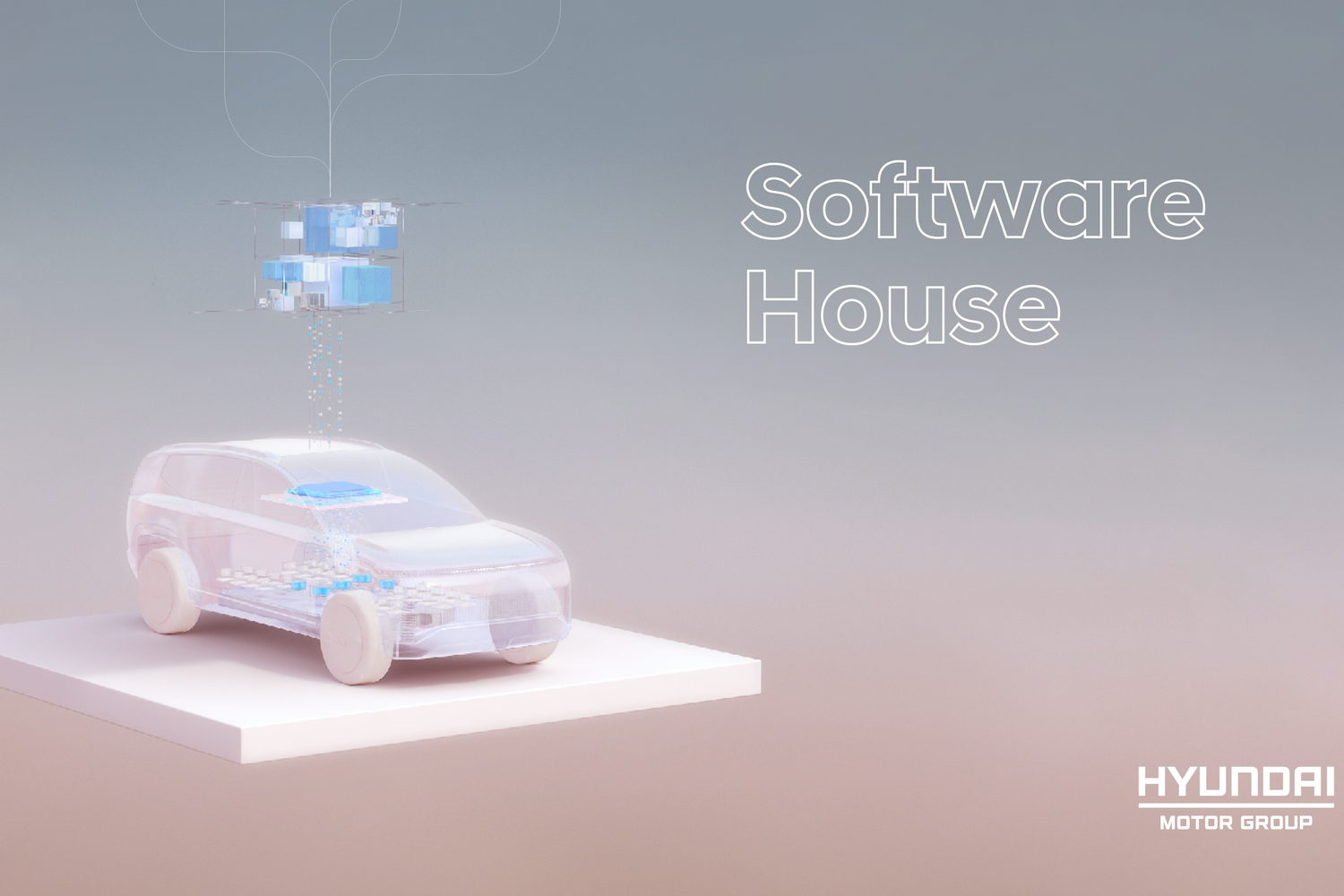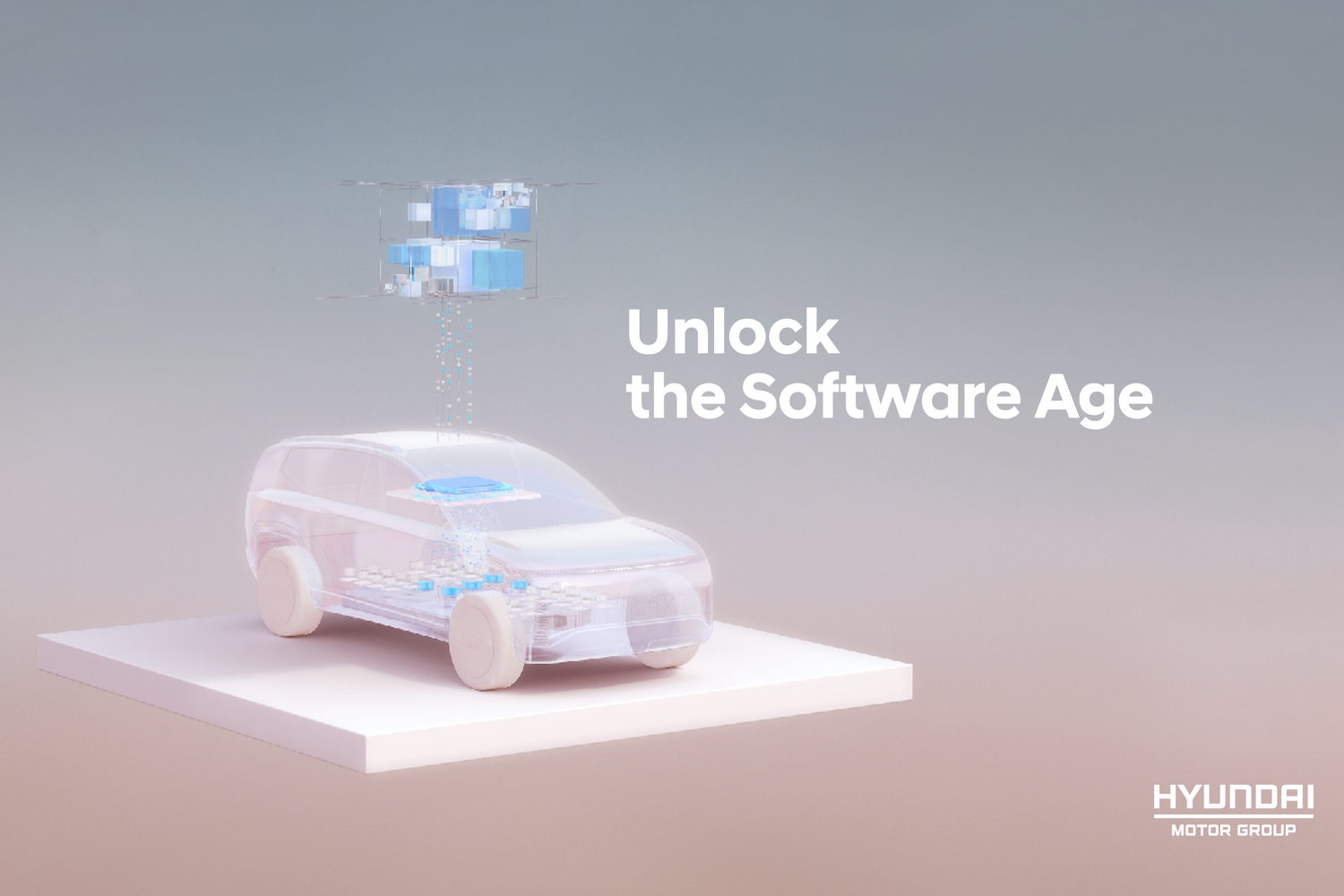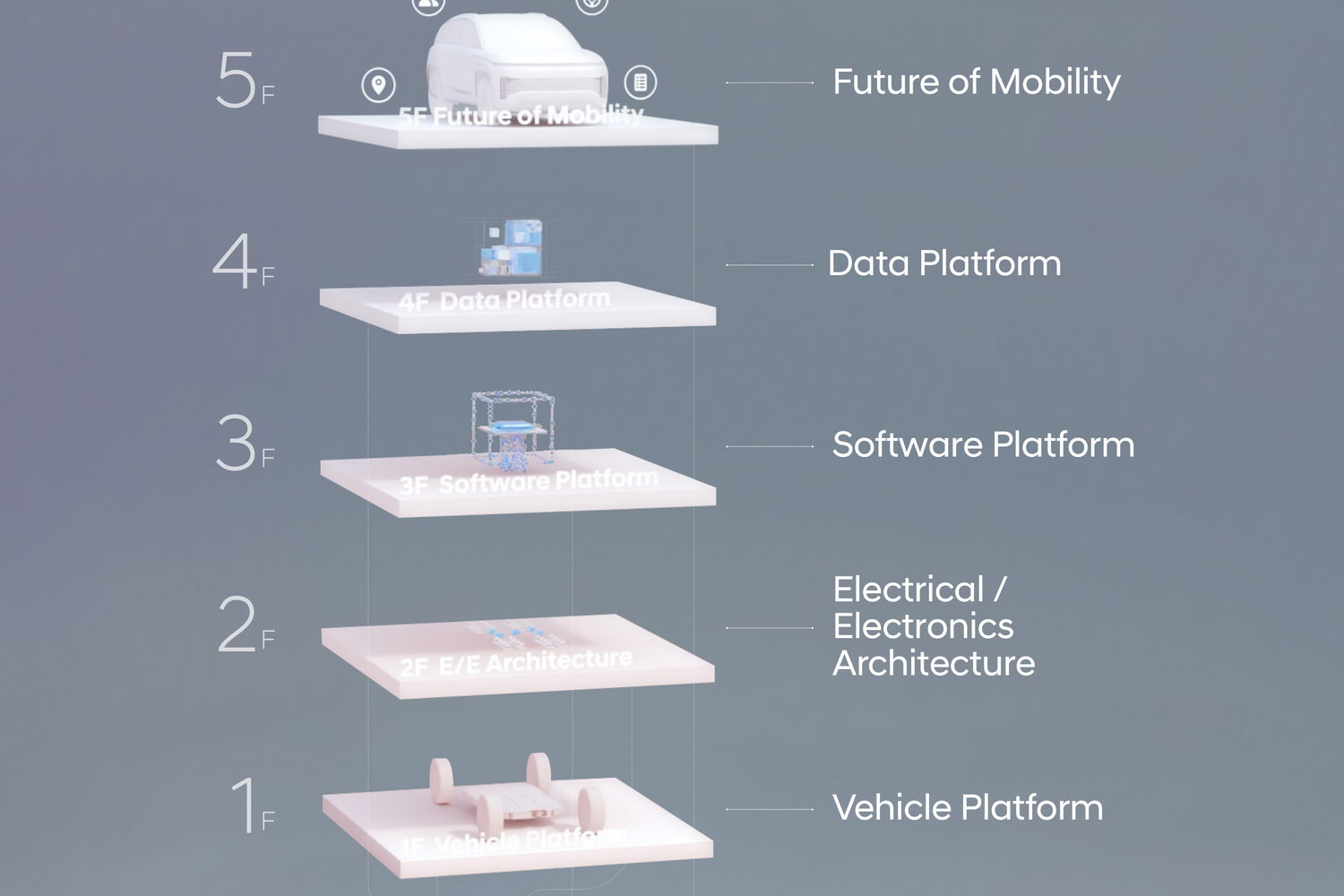The Hyundai Group has given us some details of what its new infotainment system will be, and it's going way further than just maps and Apple CarPlay. Indeed, Hyundai reckons that by 2025 its cars - and those of sibling brands Kia and Genesis - will become, in its words, 'software-defined.'
Software over-the-air
The keystone of this is over-the-air software updates, which are hardly a new thing, but Hyundai wants to really exploit how these systems can work. The Korean car-making giant is looking to have all of its cars prepped for software over-the-air (SOTA) updates by 2025, by which time it also expects around 20 million vehicles to be registered to its connected car services.
Hyundai says that the software in the cars can then be constantly updated and refined, almost down to an individual level and at "blazing speed" too. Via the connected software, Hyundai expects that it and car owners will be able to link with other services - such as robotaxis and even flying taxis, which Hyundai is also working on - to create individualised transport networks. Delivery services and accommodation providers can also be tipped into the mix.
"By transforming all vehicles to Software Defined Vehicles by 2025, Hyundai Motor Group will completely redefine the concept of the automobile and take the lead in ushering in a never-before-experienced era of mobility," said Chung Kook Park, President and Head of R&D Division, Hyundai Motor Group. "Creating visionary vehicles empowered with the ability to evolve through software will enable customers to keep their vehicles up to date with the latest features and technology long after they have left the factory."
It's even expected that these constant SOTA updates will actually help with the resale value of the vehicles, not least as the digital content and ability of modern cars has become a key aspect of what buyers look for.
Sadly, this also means that Hyundai is heading down the road of getting you to pay subscription fees for optional extras, mentioning that FoD (Feature on Demand) services will be added to Hyundai models starting next year. So if you want heated seats or similar, you're potentially going to have to stump up for them after you've bought the car. Hyundai also wants to maximise its use of your data, using the information collected from those 20 million connected cars to create "customised services that can enhance individual customer requirements." Quite what data security and privacy concerns will be part of that remains to be seen.
New EV platforms
As part of all this software improvement, Hyundai is also working on hardware, and is developing two new electric car platforms. The eM platform is said to be "developed specifically for EVs across all segments and will provide a 50 per cent improvement in driving range on a single charge compared to current EVs." It will come, of course, with SOTA and with Level 3 autonomous driving capability.
There's a second platform being designed, called "eS", which will be an 'EV skateboard' layout designed for purpose-built commercial vehicles. Think of it as a sort of high-tech, electric chassis cab. Without the cab.
"In 2025, Hyundai Motor Group will present vehicles with two platform types: eM, a passenger EV-dedicated platform; and eS, an exclusive platform for Purpose Built Vehicles," said Paul Choo, Executive Vice President of Head of Electronics & Infotainment Development Center of Hyundai Motor Group. "These new platforms are evolving under Hyundai Motor Group's 'Integrated Modular Architecture', which will lead to further standardisation and modularisation of core components of electric vehicles, such as batteries and motors, while offering advantages in sectors additional to electric vehicles."
These new platforms will have standardised batteries and electric motors, but also standardised vehicle control systems. While all of that helps to save on development costs, it also means that the SOTA tech can be more widely used, so that a performance improvement for one model automatically flows out to all models.
"The electrical and electronic architecture can be thought of as an organically connected structure that improves the function of a vehicle's electrical device components," said Hyung Ki Ahn, Vice President of Electronics Development Group. "To develop the growing number of electrical components with systematic efficiency, Hyundai Motor Group chose to implement 'Domain centralized architecture,' which structures groups and integrates controllers throughout the vehicle into four areas, Comfort, Driving, Infotainment, and ADAS. As this architecture significantly reduces development complexity and enables software updates to be carried out effortlessly without any requirement to manually modify the controller, it is ideal for presenting a variety of vehicle segments, and region-specific models tailored for different countries. It also enables us to respond flexibly to what consumers want in this fast-changing market."
This Connected Car Operating System (ccOS) is designed to "maximise hardware performance through extremely high computing power." Hyundai has said that it will partner with computing giant NVIDIA to develop AI systems that can handle "large-scale data computation processing at an ultra-fast pace." This will be key to the development of advanced autonomous driving systems.
Autonomous driving
"This year, the Group will apply an advanced Highway Driving Pilot (HDP) on the Genesis G90, which is a Level 3 technology for autonomous driving based on the second-generation integrated controller," said Woongjun Jang, Senior Vice President and Head of Autonomous Driving Center of Hyundai Motor Group. "The Group is also developing its Remote Parking Pilot (RPP) for Level 3 autonomous driving."
This isn't just about cars, either. Hyundai wants to leverage all of the data that it gathers from this new software setup to create a new "mobility industry paradigm, entirely transformed, enabling people to enjoy convenient, seamless travel, even if they don't own a car."
"By 'movement,' we mean more than just moving between locations. We're talking about the entire end-to-end journey, from leaving your house and meeting friends, to things like charging, shopping, eating, and finally returning home," explained Chang Song, President, and Head of Transportation-as-a-Service (TaaS) Division of Hyundai Motor Group. "Software-defined mobility will provide a holistic user experience based on vast mobility data and AI technology that understands user intentions and context. This way, all these journeys can be seamlessly connected."
All of this is going to be expensive. Hyundai plans to invest more than €11 billion in all of this new software tech. "Today, Hyundai Motor Group has revealed the technology concepts, strategies, and future scenarios related to software-defined vehicles that will underpin the core of future mobility," said Chung Kook Park, Hyundai's R&D head. "Our holistic approach will empower Hyundai Motor Group to lead the transformation in the mobility paradigm. As we take these technological innovations from imagination to reality, Hyundai Motor Group will unlock the future potential of the car and open up new possibilities to rewrite the customer experience and deliver a new way of life, abundant with meaning and value."

